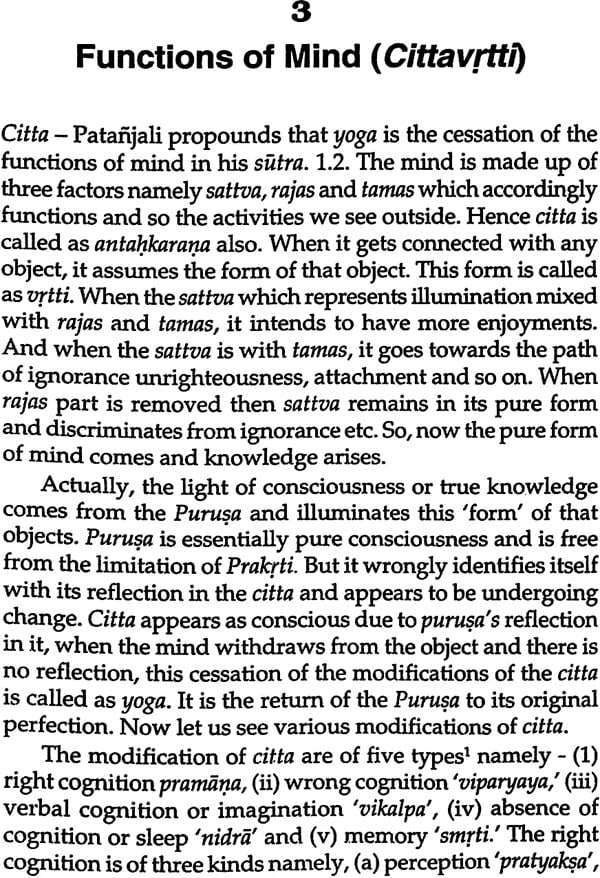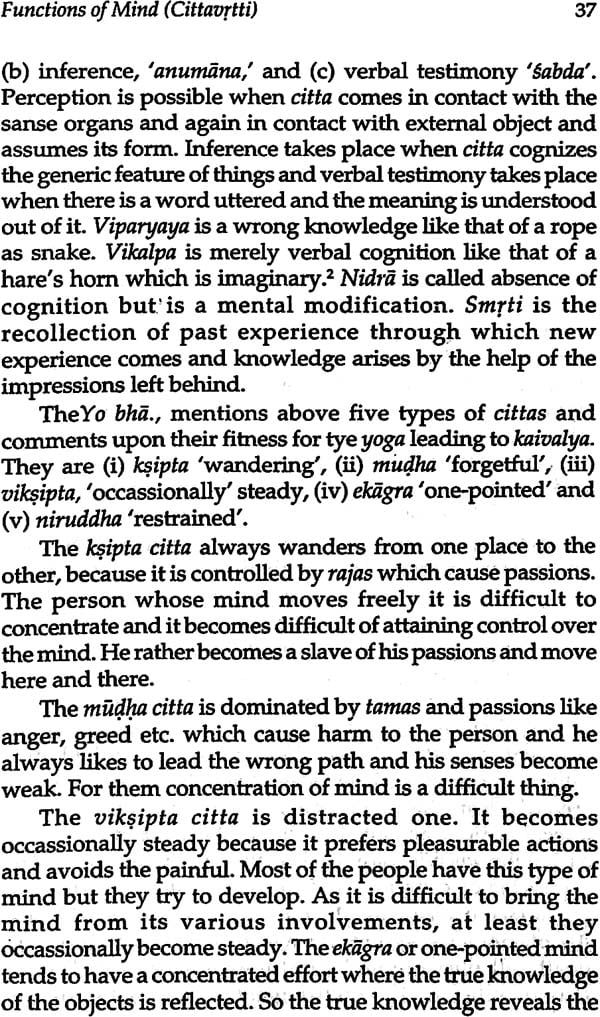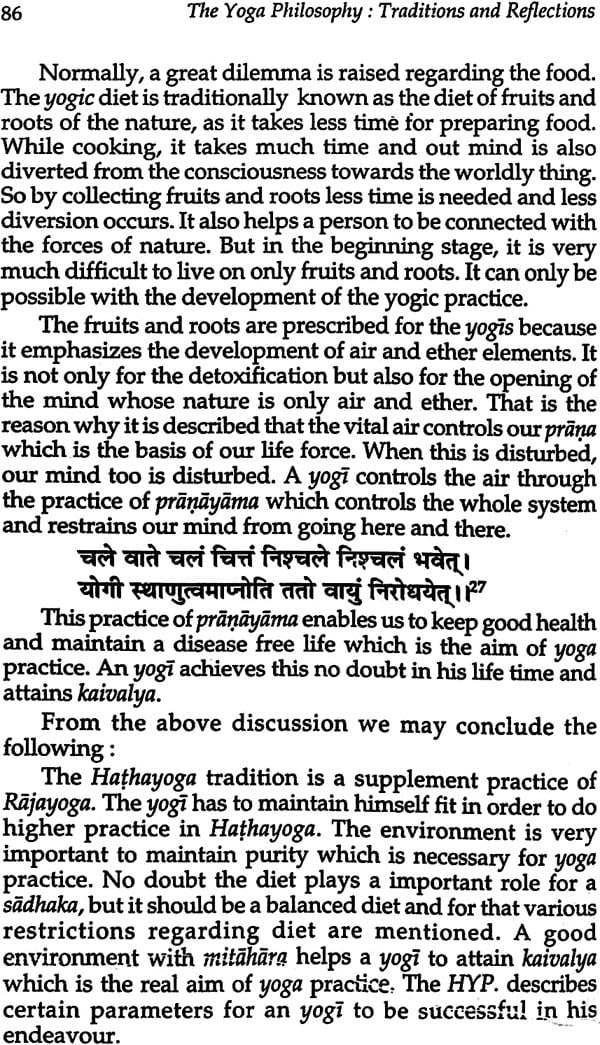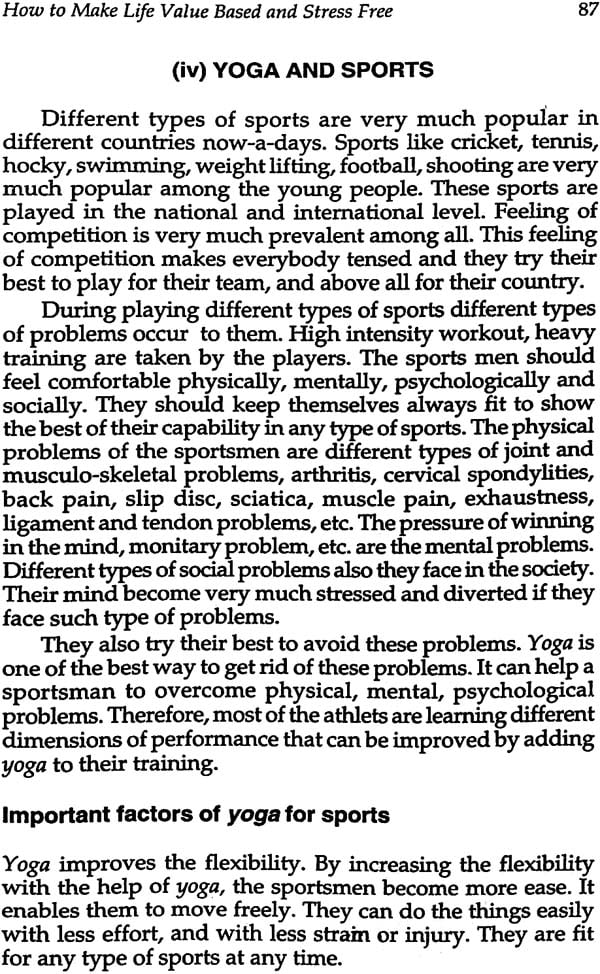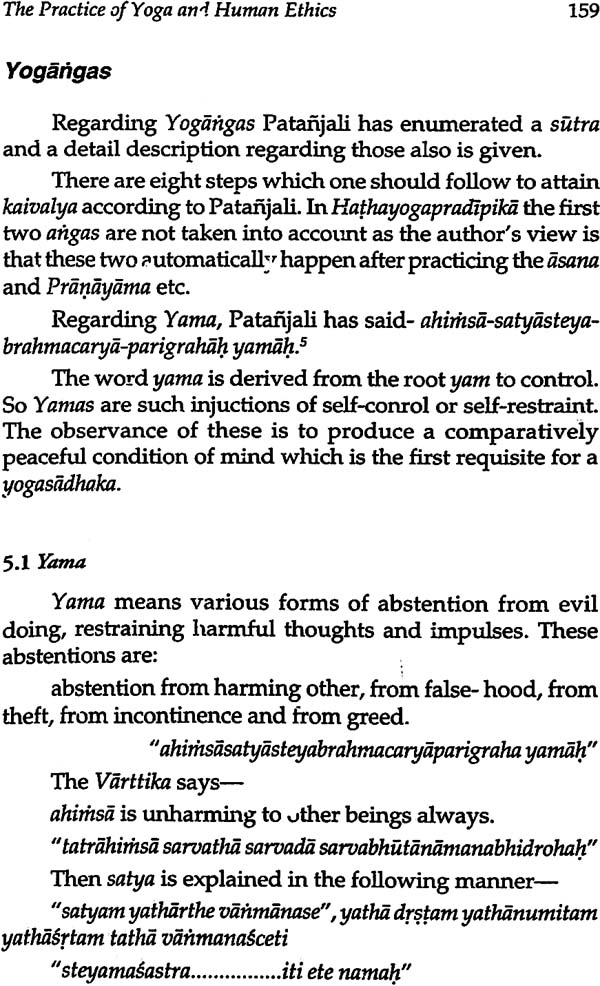
The Yoga Philosophy - Traditions and Reflections
Book Specification
| Item Code: | NAO744 |
| Author: | Dr. Subhash Chandra Dash Dr. Mrs Shantipriya Devi |
| Publisher: | Pratibha Prakashan |
| Language: | English |
| Edition: | 2011 |
| ISBN: | 9788177022285 |
| Pages: | 209 |
| Cover: | Hardcover |
| Other Details | 9.0 inch X 6.0 inch |
| Weight | 400 gm |
Book Description
The present study is a kind of analysis incorporating both the traditional and modern approaches of the practice of Yoga. Here, the subjects are choosen with an intesion in order to bring out the analytical aspects of Yoga as a philosophy and science. The Yoga is called science, because it is experimented in the laboratory of human being, in whom both body and mind form a strong unit.
The philosophers and practitioners of Yoga developed this theory and practice of Self discipline, which is very much required to remove physical and mental illness completely if practiced daily as per the instructions of the guru. The difficult problems of terrorism of today can also be eradicated by the practice of Yoga.
Dr. Subash Chandra Dash, Reader, Department of Sanskrit, Utkal University, a double gold medalist from the University of Poona is a Researcher and a creative author in Sanskrit and Oriya languages. He has worked in the subjects like Nyaya-Vaisesika philosophy, Yoga Philosophy, Pali and Buddhist literature, Manuscriptology, Religion and Indian Culture. He served in the prestigious institutions like Vaidik Sansodhan Mandal, Pune, Centre of Advanced Study in Sanskrit, Poona University and Deccan College Pune.
He has presented seventy research papers in National and International Seminars and Conferences. So far he has authored nine books.
Dr. (Mrs.) Shantipriya Devi is a Researcher in Sanskrit language. She has worked in the Vedic & Classical Grammar, Yoga Philosophy, Manuscriptology and Indian Culture. At present she is engasing P.G. classes in the Deptt. of Sanskrit, Utkal University, Bhubaneswar. So far she has authored two books and presented thirty research papers in National & International Conferences.
The Science of Yoga started from the Upanisadic Period, which was very much in practice. The Vedic and Upanisadic seers concentrated and contemplated on the unseen supreme energy, which was very much experienced. They went into deep stages of self realization, which was very much personal in nature. This experience was transmitted to the devoted disciplines, who could visualize through the instructions given by the Guru from time to time. The guru and sisya tradition never stopped. And also the teaching of Atmavidya was considered as of prime importance. Every desciple led by the Guru followed the methods. The disciples were instructed by the strict rules and disciplines to experience personally. Hence, acquiring of the self knowledge meant self discipline. This became a regular practice, which developed into their own which is called Svadhyana. This means self study of one self and regarding one self. This was also interpreted as study of the Sastras.
The tradition continued with the dedicated service rendered by the teachers. They motivated their disciples to remain physically fit and mentally balanced. This resulted into a discipline called Yogasastra. Patanjali the founder of Yoga Philosophy systematized the Yogic instructions laid down by the Vedic seers into a permanent system of self discipline. Hence, we call Patanjali as the founder of Yoga philosophy. Even though Yoga existed long before in the ritualistic practices of the Vedic tradition, Patanjali brought under the frame work of philosophical enquiry with lot of practical solutions of Self realization. The Yogasutras composed by Patatanjali provided a long awaited pratical tips for bringing balance to body and mind. The Vedanta philosophy also provided a platform for Self realization, how ever the Yoga system offered a more viable and practical method of the same. We may say that Vedanta was the theoretical aspect where as Yoga provided the practical side of Self-realization.
In the course of time, many followers and disciples of Patanjali came into being and wrote various commentaries on Yogasutra. They interpreted the fundamental aspects of the theory put fourth by Patanjali and gave some new ideas of balancing the body and mind. The Astangayoga became the main subject of interpretation by the tradition slowly, which contributed much for the development of other branches of Yoga. By the time of Mahabharata, we find different branches of Yoga called Jnana, bhakti, rajayoga, and samkhyayoga etc. There after we find other branches of Yoga slowly which came into practice. The Hathayoga tradition is again a strict discipline of Yoga and Tantra. The practitioners of this traditions focused on asana and pranayama. They also had a line of thinking and understanding of Yoga. By this way the tradition came into force and many followers joined the system of Yoga afterwards. Many teachers interpreted Yoga in different ways, but there is a common thread in all these interpretations and schools of Yoga both tradition and modern. The common point was then Self realization by practicing astangayoga and also now the intension of the teacher is to bring the same through a modern blend of balancing both body and mind. Hence, every time Yoga has attracted not only the mind of ancient seers but also a common man even at present.
The present study is a kind of analysis incorporating both the traditional and modem aproaches of the practice of Yoga. Here, the subjects are choosen with an intesion in order to bring out the analytical aspects of Yoga as a philosophy and science. The Yoga is called science, because it is experimented in the laboratory of human being, in whom both body and mind form a strong unit. The philosophers and practitioners of Yoga developed this theory and practice of Self discipline, which is very much required to remove physical and mental illness completely if practiced daily as per the instructions of the guru. The difficult problems of terrorism of today can also be eradicated by the practiced of Yoga. This is a modern problem but we can overcome it through constant practice. The human resource development can also be possible by using several techniques of Yoga practice and there by we can overpower the modern problem of heavy unemployment. A proper plan and guideline is necessary in the higher level of planning and implementation. This book provides some solutions in this regard. If it is taken positively, the labour of the authors will be much fruitful.
I must keep on record the help rendered by my wife Dr. Shantipriya Devi and co-author for preparing this manuscript with me, which has seen the light of the day in such a form. We sincerely thank our esteemed colleagues of the Department of Sanskrit, Utkal University for their encouragement to bring out this book. We can not forget the help rendered by our daughter Kumari Swati Dash and son Ayusman Satyabrata Dash for their constant help in various ways for the completion of this work. We thanks Ratnakar and my studen Sri Sanjeeb kumar Mishra for preparing the final typing of this book. Finally, our thanks are due to Dr. R.S. Shukla, Proprietor, Pratibha Prakashan, New Delhi for publishing this book in time.
| Peface | v | |
| Abbreviation | ix | |
| 1 | What is Yoga | 1 |
| (i) | Types of Yoga | |
| 2 | Steps of Yoga | 23 |
| 3 | Functions of Mind (citta) | 36 |
| 4 | Patanjali's Yogasutra and Hathayoga pradipika: A Comparison | |
| 5 | How to make life value based and stress free | 63 |
| Yoga Practice and Human Resource development | 73 | |
| Environment and diet for yoga practice in | 81 | |
| Hathyayogapradipika | ||
| Yoga and sports | 87 | |
| Pranayama | 91 | |
| Yoga-A way of Life | 108 | |
| The concepts of Yoga in Yogattvavaridhih | 111 | |
| Process of purification in Tanstrayoga Practices | 120 | |
| Pranayama as conceived by Patanjali | 127 | |
| Awakening of Kundalini | 133 | |
| A note on klesas | 136 | |
| 6 | The practices of Yoga and Human Ethics | 153 |
| Glossary of Yogic Terms | 171 | |
| Bibliography | 202 |


